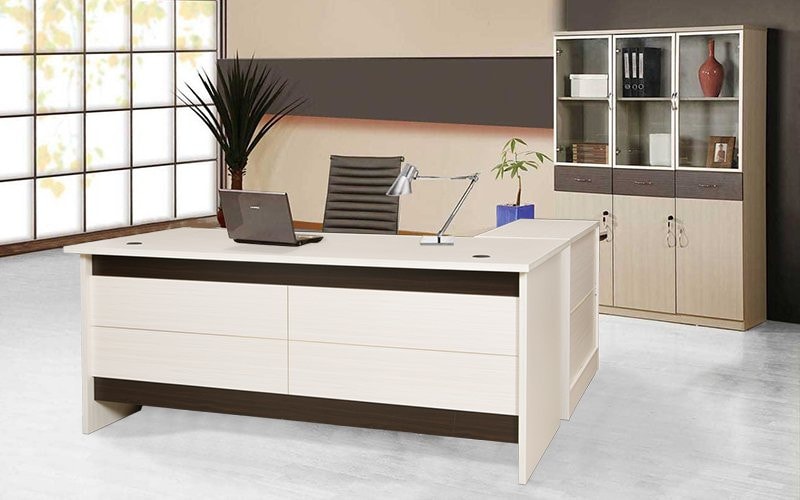Introduction
The future of office design is undergoing a remarkable transformation driven by evolving work dynamics, technological advancements, and a growing emphasis on employee well-being and sustainability. In this article, we’ll explore key trends that are shaping the future of office design, offering insights into how workplaces will adapt to meet the changing needs of the workforce.
- Hybrid Work Environments
The COVID-19 pandemic accelerated the adoption of remote work, and many organizations are embracing a hybrid work model. This trend is influencing office design by focusing on creating flexible spaces that cater to both in-office and remote employees. The office becomes a hub for collaboration, innovation, and culture-building, while remote work allows for focused, individual tasks.
- Flexible and Adaptable Layouts
Flexibility is paramount in the future of office design. Modular furniture and layouts that can be easily reconfigured are becoming more prevalent. This adaptability allows organizations to optimize space utilization for various activities and changing team sizes.
- Workplace Wellness and Well-being
The well-being of employees is at the forefront of office design trends. Design elements such as natural lighting, biophilic elements (indoor plants and greenery), comfortable ergonomic furniture, wellness rooms, and mental health support spaces are being incorporated to enhance employee physical and mental health.
- Technology Integration
The future workplace will be deeply intertwined with technology. This includes smart building systems that optimize energy use, IoT devices for space utilization tracking, touchless interfaces, and advanced video conferencing solutions that support remote collaboration.
- Remote Work Support
Even as employees return to the office, the workplace will need to accommodate remote workers. Virtual meeting rooms, robust video conferencing setups, and asynchronous communication tools will become standard features to ensure seamless collaboration between in-office and remote teams.
- Sustainability and Green Design
Sustainability remains a top priority in office design. Green building materials, energy-efficient systems, waste reduction initiatives, and carbon-neutral office spaces are all part of the push towards environmentally responsible workplaces.
- Collaborative Spaces
Collaborative spaces will continue to evolve, offering a variety of environments for teamwork. These may include project-specific work areas, informal meeting pods, and tech-equipped huddle rooms to facilitate idea-sharing and brainstorming.
- Remote Work Policies
Offices will adopt flexible remote work policies that allow employees to choose where they work based on their tasks and preferences. The office becomes a destination for specific needs, such as team meetings or training sessions.
- Employee-Centric Design
Design will revolve around employee needs and preferences. Personalized workspaces, ergonomic furniture, and wellness-focused amenities will be tailored to create a positive and comfortable work experience.
- Inclusive and Accessible Design
Inclusivity will be a central consideration in office design. Spaces will be designed to accommodate employees of all abilities, with accessible furniture, assistive technology, and inclusive layouts that promote diversity.
- Micro-Offices and Satellite Spaces
Micro-offices and satellite workspaces in suburban areas will emerge to provide employees with more options for where they work. These spaces offer convenience, shorter commutes, and a break from the traditional urban office.
- Data-Driven Decision Making
The use of data analytics and workplace management software will increase to optimize space usage, identify trends, and make informed decisions about office design and resource allocation.
- Privacy and Focus Areas
As open floor plans persist, dedicated focus areas and private spaces will become essential. These might include phone booths, soundproof pods, and quiet zones to cater to tasks that require concentration and confidentiality.
- Hygiene and Safety Measures
Health and safety considerations will remain a priority. Offices will incorporate touchless technologies, enhanced ventilation systems, and antimicrobial surfaces to reduce the risk of contagion.
- Hoteling and Desk Booking Systems
Desk booking systems will become standard, allowing employees to reserve workspaces in advance or on the day of their visit. This approach optimizes space utilization and supports hot desking practices.
- Artificial Intelligence (AI) and Automation
AI-driven workplace solutions will automate routine tasks, from booking meeting rooms to adjusting environmental conditions based on occupancy. AI can also assist with workplace analytics and predicting space needs.
- Personalized Experiences
Customized office experiences will be facilitated by AI, which can adjust lighting, temperature, and even the layout based on individual preferences stored in profiles, enhancing employee comfort and productivity.
- Immersive Technologies
Augmented reality (AR) and virtual reality (VR) will find applications in office design and training. VR can simulate office layouts, allowing employees to navigate new spaces virtually.
- Coworking and Flexible Office Providers
Many organizations will partner with coworking and flexible office providers to access additional workspace options. This allows for scalability and greater flexibility in accommodating remote and mobile workers.
- Community and Culture
The office will remain a place for building company culture and fostering a sense of belonging. Events, communal areas, and culture-building activities will continue to be central to office life.
Conclusion
The future of office design is a dynamic and evolving landscape, driven by a mix of factors, including technology, employee preferences, and global events like the COVID-19 pandemic. The workplace will continue to be a hub for collaboration, innovation, and culture-building, but it will also provide flexibility, support remote work, and prioritize employee wellness and sustainability. By embracing these trends, organizations can create workspaces that adapt to the changing needs of their workforce, enhance productivity, and promote employee well-being and happiness.


